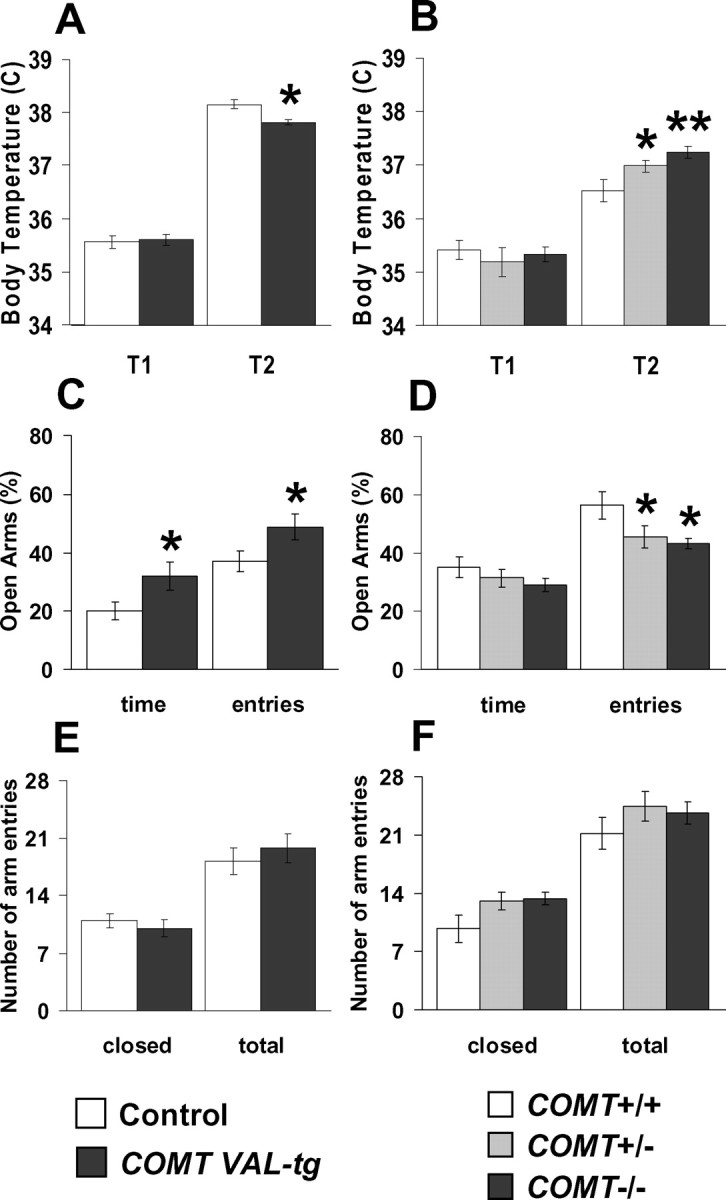Figure 8.

Anxiety-like traits are decreased in COMT-Val-tg mice and increased in COMT−/− mice. A, Body temperatures displayed by control and COMT-Val-tg mice before (T1) and 25 min after (T2) the manipulation of the mice, consisting of handling and insertion of the rectal probe, plus a supplemental stress, consisting of placing the animals in a clean new cage. n = 13–16 per group. *p < 0.05 versus T2 of control mice. B, Body temperatures displayed by COMT+/+, COMT+/−, and COMT−/− mice before (T1) and 10 min after (T2) handling and insertion of the rectal probe. n = 9–11 per group. *p < 0.05; **p < 0.005 versus T2 of COMT+/+ mice. C, D, In the elevated plus maze, the percentage of time spent in the open arms and number of visits to the open arms were (C) significantly higher for COMT-Val-tg mice and (D) less for COMT−/− and COMT+/− mice. n = 9–15 per group. *p < 0.05 versus proper wild-type control group. E, F, Locomotor activity in the elevated plus maze was not different between control and mutant mice as measured by closed arm entries and total arm entries. Values represent mean ± SEM.
